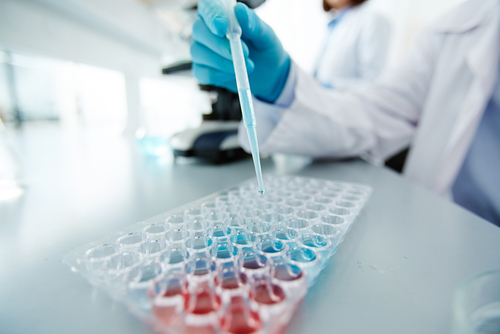Researchers Find New Enzyme That Might Aid in ‘Putting the Brakes’ on Parkinson’s Disease

Researchers have discovered a new enzyme that might aid in “putting the brakes” on Parkinson’s by inhibiting the LRRK2 pathway, known to play a critical role in this neurodegenerative disease.
The findings are still at an early stage, but the team is already trying to find compounds that can switch on this enzyme in the hopes of finding a new therapy that can slow down Parkinson’s disease.
The study, “PPM1H phosphatase counteracts LRRK2 signaling by selectively dephosphorylating Rab proteins,” was published in the journal eLife.
In recent years, mutations in the gene coding for the leucine-rich repeat kinase 2 (LRRK2) have been identified as the most common cause of genetic Parkinson’s, accounting for 1-2% of all cases and up to 40% in some ethnic groups.
LRRK2 works as an enzyme with kinase activity. This type of proteins, called kinases, assist in the transfer of a phosphate group — a molecule made of oxygen and phosphorus — to certain proteins. Such modification is called phosphorylation and is an essential step in turning on and off many proteins inside the cell.
Mutations that increase LRRK2 kinase activity lead to toxic effects on the nervous system, believed to play a central role in the development of Parkinson’s. Thus, looking for therapies that inhibit LRRK2 is a potential path to slow the degenerative process and could have therapeutic potential for Parkinson’s.
From a prior screening, scientist Dario Alessi’s team at the University of Dundee in Scotland already knew that human cells produced some sort of enzyme that could reverse LRRK2 activity.
Together with colleagues at Stanford University, Alessi and his team tried to discover what this enzyme was. Using human cell lines cultured in the lab, they found one — called protein phosphatase 1H (PPM1H). This enzyme is naturally produced in the body and is able to counteract LRRK2 signals. Specifically, it unlocks a type of proteins called Rab, which are inappropriately blocked by LRRK2.
“Parkinson’s is like a runaway train — at present we have no way of putting the brakes on to slow it down, let alone stop it. This new enzyme we have found acts as the brakes in the pathway that causes Parkinson’s in humans,” Alessi said in a press release.
“We have known for many years that the LRRK2 pathway is a major driver behind Parkinson’s but the concept of developing an activator of the PPM1H system to treat the disease is completely new. This finding opens the door for a new chemical approach to the search for Parkinson’s treatments,” added Alessi, PhD, university professor and director of the MRC Protein Phosphorylation and Ubiquitylation Unit (MRC-PPU).
So far, approaches to block LRRK2 have focused on developing compounds that inhibit the LRRK2 kinase.
“But even once this is done we don’t know how well such a drug will be tolerated in the body so we are also looking for other ways to switch off this pathway. The purpose of this research was to find an enzyme that naturally stops LRRK2 by mediating these toxic pathways,” Alessi said.
There currently are no treatments able to slow the progression of Parkinson’s disease. “So we need to be throwing the kitchen sink at this problem,” Alessi said.
As the PPM1H enzyme appears to be present in all people, including those with Parkinson’s, Alessi said a breakthrough could be far-reaching.
“If we can find a way of switching this on then it theoretically could benefit all,” he said. “It also raises another exciting question that we want to study — is PPM1H higher in the brain of certain people and, if so, is this protecting them against Parkinson’s?”
Alessi and his colleagues have already started to work with the university’s Drug Discovery Unit to search for a compound able to switch on PPM1H, which could represent a potential treatment for Parkinson’s.
“This will be challenging work but if we can identify appropriate drug-like molecules then the next stage would be to test them in cells and in animal models to see if they do indeed switch off this pathway. If that works it would be certain to stimulate further preclinical activity and could potentially lead to a new way to treat Parkinson’s,” Alessi said.
The research was supported by the Michael J. Fox Foundation and the UK Medical Research Council.






